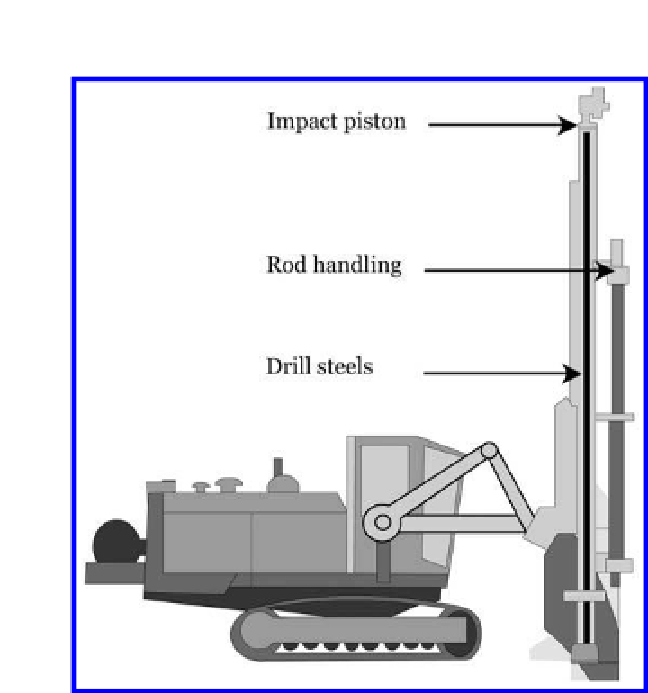Biomedical Engineering Reference
In-Depth Information
Figure 6.9.
The vehicle used when drilling in rocks, including the drilling steel.
drilling in rocks:
•
choose location,
•
predetermine depth,
•
stop percussion,
•
and retract the drill steels.
The splices between the drill steels parts are drawn together during the drilling
process and a sound detection system by human or artificial sensing identifies
when it is retracted. This example shows that the human perception in a produc-
tion process indeed can be executed by artificially complemented systems. Sensor
systems will most likely make the process safer and time effective.
Another illustrative and technically sophisticated human-based method for
identifying properties is when a loaf of bread has reached the desired tempera-
ture, in this case 96
◦
C, and the crumb has developed a system of air bubbles, i.e.,
gas cells. This technology for industrial production of bread has extensive simi-
larities with the operator's methodology for estimating the same properties. The
methodology of a “finger-tip” sensing as seen in Fig. 6.10(b) refers to human-based
acting and sensing, mimics a traditional method to act when the operator exam-
ines the development of the crumb simply to make the perceptual process similar
to investigating the degree of ripeness for watermelons or similar kinds of fruits.







Search WWH ::

Custom Search